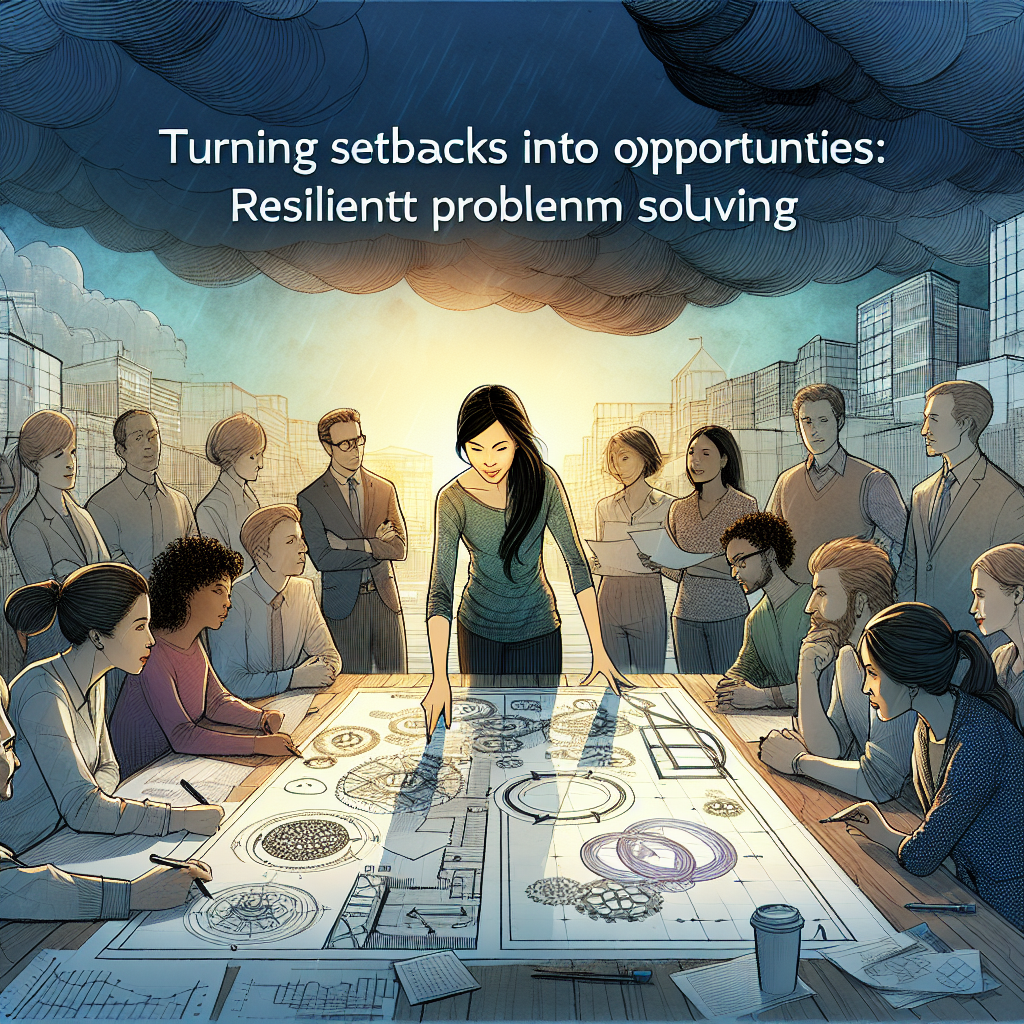Introduction
What if every setback you faced was not a roadblock, but a stepping stone to greater success? In today’s fast-paced world, setbacks are inevitable. Whether they’re personal, professional, or emotional, they come in many forms — from job losses to project failures. But as the age-old saying goes, “What doesn’t kill you makes you stronger.” This article explores "Turning Setbacks into Opportunities: Resilient Problem Solving," revealing how you can transform challenges into avenues for growth and success.
By learning how to embrace adversity, we can not only cope with but also thrive in the face of difficulty. This journey begins with the understanding that resilience isn’t merely bouncing back; it’s about bouncing forward into new opportunities.
The Foundation of Resilience
Understanding Resilience
Resilience is often described as the ability to bounce back from difficulties. But, it’s also about developing a mindset that views challenges as opportunities. This mindset can be cultivated through awareness, adaptability, and perseverance.
Table 1: Key Characteristics of Resilient Individuals
| Characteristic | Description |
|---|---|
| Adaptability | Ability to adjust thoughts and behaviors in response to challenges. |
| Optimism | Maintaining a positive outlook despite setbacks. |
| Emotional Regulation | Managing emotions in stressful situations. |
| Problem-Solving | Developing innovative solutions to overcome obstacles. |
| Social Support | Building a network of relationships for encouragement and insight. |
The Science Behind Resilience
Research has shown that resilient individuals utilize various cognitive and behavioral strategies to cope with setbacks. For example, a study conducted by the American Psychological Association found that individuals who embrace a growth mindset view failures as learning opportunities, leading to increased motivation and engagement.
Case Study: J.K. Rowling
Consider J.K. Rowling, the author of the Harry Potter series. Before achieving global success, she faced numerous setbacks: homelessness, rejection from multiple publishers, and personal struggles. Instead of surrendering, she continued to write and adapt her story, ultimately creating an iconic franchise. Rowling’s journey exemplifies "Turning Setbacks into Opportunities: Resilient Problem Solving."
The Process of Turning Setbacks into Opportunities
1. Acknowledgment
The first step in resilient problem solving is acknowledging the setback without becoming overwhelmed by it. Denial can lead to stagnation, while acceptance provides clarity.
Actionable Insight: Keep a journal to document setbacks, including your feelings and initial reactions. This practice allows you to process emotions constructively.
2. Reflection
Once you’ve acknowledged the setback, reflect on it. What led to the situation? What could you have done differently? This reflective phase is crucial for learning valuable lessons.
Chart 1: Reflective Questions to Consider
| Question | Purpose |
|---|---|
| What went wrong? | Identify gaps and mistakes. |
| What did I learn? | Extract lessons from the experience. |
| How can I adapt moving forward? | Formulate a plan to change strategies. |
3. Reframe Your Perspective
Reframing involves shifting your viewpoint about the setback. Instead of seeing it as a failure, consider it a teacher.
Actionable Insight: Try using positive language when describing setbacks. Replace phrases like “I failed” with “I gained experience.”
4. Develop a New Plan
Equipped with insights from reflection and reframing, it’s time to develop a new action plan. This plan should incorporate innovative strategies you’ve learned from your experience.
Case Study: Apple Inc.
After experiencing significant setbacks in the 1990s, including declining revenue and leadership conflicts, Apple reinvented itself by refocusing on innovation and design. By launching the iMac and later, the iPhone, the company turned its fortunes around and became a technology leader. This transformation reflects the essence of "Turning Setbacks into Opportunities: Resilient Problem Solving."
Building a Resilient Mindset
Embrace Continuous Learning
In the face of setbacks, the willingness to learn is paramount. Attend workshops, read books, and seek mentors.
Surround Yourself with Supportive People
Your environment plays a vital role in resilience. Cultivate relationships with individuals who encourage growth and provide honest feedback.
Cultivate Emotional Intelligence
Emotional intelligence (EQ) is the ability to understand and manage your emotions and the emotions of others. Higher EQ leads to better handling of stress and better decision-making skills.
Conclusion
Turning setbacks into opportunities is not just a catchy phrase; it is a profound life skill essential for personal and professional growth. By building resilience through acknowledgment, reflection, reframing, and planning, anyone can transform challenges into significant stepping stones.
In your journey, remember that every setback is a chance to redirect your path toward something greater. Embrace the process of "Turning Setbacks into Opportunities: Resilient Problem Solving" wholeheartedly, and you’ll unlock not just survival but the potential for remarkable success.
FAQs
1. What is resilience?
Resilience is the capacity to recover quickly from difficulties; it’s about adapting well in the face of adversity.
2. How can I develop resilience?
You can develop resilience by practicing mindfulness, enhancing emotional intelligence, maintaining a positive mindset, and building supportive relationships.
3. What are some practical strategies for reframing setbacks?
Practical strategies include journaling, engaging in self-reflection, and seeking feedback from trusted peers.
4. How do successful people handle setbacks?
Successful people often view setbacks as opportunities for growth. They evaluate their experiences, adapt their strategies, and keep moving forward.
5. Is it normal to feel overwhelmed by setbacks?
Yes, feeling overwhelmed is a natural response to setbacks. Acknowledge those feelings, but work towards processing and overcoming them.
By understanding the principles of resilient problem solving, you not only equip yourself to face challenges head-on but also open doors to newfound opportunities. Take the first step today — embrace resilience and transform your setbacks into the greatest chapters of your journey.

